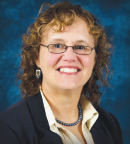The Appalachian Community Cancer Alliance (ACCA) has launched a lung cancer screening initiative to improve cancer care in rural Appalachia. Home to nearly 26 million people, the Appalachian region includes all of West Virginia and parts of 12 other states, and it has a 10% higher cancer mortality rate than the rest of the United States (15% higher in rural areas of Appalachia). Of the 420 counties in the region, 25% are rural and plagued by poverty as well as a lack of health-care resources.
In partnership with six state oncology societies that are part of the Appalachian region, the Association of Community Cancer Centers (ACCC) launched the Alliance in December 2021, with a priority focus of improving cancer screenings through its Rural Appalachian Lung Cancer Screening Initiative.
Through partnerships with local advocates in these communities at risk, the initiative will focus on developing and implementing new patient-centric approaches to promote the importance of and raise awareness about lung cancer screening in rural Appalachia. According to members of the Alliance, best practices from the initiative can then be shared broadly, with the hope of translating them to other at-risk populations across the United States and beyond. Both the screening initiative and the Alliance as a whole support the reignited White House Cancer Moonshot Initiative, which put out a call to action for all cancer care stakeholders to jump-start progress on the 10 million+ missed screenings in the United States resulting from the COVID-19 pandemic.
During a LinkedIn Live event presented by ACCC,1 host Leigh Boehmer, PharmD, BCOP, was joined by panelists Mary Reid, PhD, MSPH; Michael Gieske, MD; and Richard Martin III, MD, MPH, (moderator, President of the Tennessee Oncology Practice Society and one of the founding members of the ACCA), who discussed lung cancer disparities in the Appalachian region. The panel offered evidence-based practices to increase cancer screening and improve patient outcomes in this sizable area of the country.

Leigh Boehmer, PharmD, BCOP

Mary Reid, PhD, MSPH

Michael Gieske, MD

Richard Martin III, MD, MPH
Forming the Alliance
According to Dr. Boehmer, Chief Medical Officer and Deputy Executive Director of ACCC, the Alliance is made up of a network of multidisciplinary and multispecialty health-care providers, patients/patient advocacy groups, professional associations, and policymakers.
“[Forming the Alliance] was an attempt to bring all the stakeholders together to take action on improving equity and outcomes for people in rural Appalachia facing a cancer diagnosis,” Dr. Boehmer said. “The Alliance was designed to provide a platform to share promising, evidence-based, translatable practices and solutions to improve access and quality of care for patients in this part of the country.”
Dr. Boehmer explained that the initiative aims to increase lung cancer screening rates by identifying and addressing informational, literacy, and cultural barriers, all of which may inhibit rural Appalachian residents from seeking preventive and guideline-concordant cancer care.
Why Do These Disparities Exist?
The lung cancer disparities seen in rural Appalachia today are driven in large part by increased rates of tobacco use in the region, which has led to a tremendous burden of lung cancer. Kentucky, for example, has the highest mortality in the nation for lung cancer (55% higher than the national average for both incidence and mortality). According to Dr. Gieske, a primary care practitioner at St. Elizabeth Virtual Health Care and primary care representative on the thoracic oncology disease management team, similar numbers are seen across all of Appalachia. Currently, in the United States, about 14% of adults smoke, but in some Appalachian counties, smoking rates are upward of 30%.
To decide on the location of their pilot project site, leaders of the initiative used geospatial mapping to find the intersection of the highest mortality rates and lowest access to care in Appalachia. Results revealed a 10-county region where Kentucky, Virginia, and West Virginia meet; these 10 counties comprise the pilot region.
Dr. Reid, Chief of Cancer Screening and Survivorship at Roswell Park Comprehensive Cancer Center, Buffalo, New York, explained that a confluence of factors contribute to the high rates of lung cancer incidence and mortality in Appalachia, and smoking is far from the only contributor. Factors such as lack of transportation, lack of access to a primary care provider, high poverty rates, lack of education, and higher levels of exposure to radon in the region (particularly in West Virginia and Pike County, Kentucky) significantly contribute to the low lung cancer screening rates and high mortality seen in this area. And when these high-risk populations don’t get screened, lung cancers are diagnosed at later stages.
“The whole paradigm of lung cancer mortality will be changed when we start to change access to screening,” Dr. Reid predicted.
The whole paradigm of lung cancer mortality will be changed when we start to change access to screening.— Mary Reid, PhD, MSPH
Tweet this quote
Dr. Gieske noted the importance of adhering to the evidence-based guidelines regarding lung cancer screening, keeping in mind that the guidelines are ever-changing as the research evolves. “Once you start screening outside of evidence-based guidelines, you can start potentially causing more harm than benefit,” he said. “We want to make sure we go after these high-risk populations, based on strict evidence.”
Increasing Screening Uptake
According to Dr. Gieske, increasing screening in the region will rely heavily on educating community members, patients, and providers about the importance of—and in some cases merely the existence of—lung cancer screening. “A lot of women know about mammograms and breast cancer screening, but they don’t realize lung cancer kills three times more women than breast cancer,” he noted.
Although educating providers sounds easy, it can be quite challenging. “I think the most important group to educate are primary care providers; they’re on the front lines and are most likely to see patients on a regular basis,” said Dr. Gieske.
Dr. Reid maintains that increasing screening uptake in Appalachia will require connecting the dots between “patient” and “access,” however necessary, pointing out the importance of respecting the way primary care physicians conduct their practice and not telling them how to screen their patients. “You want to educate them, but you have to let them tailor how they get people in for screening based on their relationship with patients, because this is the key relationship,” she said.
That said, Dr. Gieske and Dr. Reid agree that education shouldn’t stop with the primary care provider. It should be multidisciplinary and provided based on a community-level needs assessment, using the existing infrastructure and resources within these communities. For instance, screen for lung cancer when patients are already in for breast cancer screening, use community health workers at local events to disseminate information, and explore targeted approaches with faith-based organizations. “There’s a lot of low-hanging fruit when we establish true, longitudinal partnering relationships within the community,” added Dr. Martin.
At the community level, engaging with radiology practices with computed tomography (CT) scanners can also bulk up numbers in terms of screenings. Then, as needed, patients can move into higher-level management through lung cancer screening programs. “I will work with anyone who’s got a CT scanner,” said Dr. Reid. “They’re not my competition in this area; they are my co-workers.”
Dr. Gieske noted that clinical nurse navigators are the “glue” to their screening program. If a suspicious nodule is found through screening, navigators work with a nodule review board to collectively evaluate the findings and then coordinate follow-up imaging and facilitate communication with patients. “They’ve garnered the confidence and buy-in of the primary care providers,” he explained. “The nurse navigators guide patients through this scary time in their lives and help them move through these processes in the most efficient and cost-effective manner.”
Emphasizing the simplicity of lung cancer screening can also increase uptake, as many people don’t realize how quick and easy the screening process can be. “We can screen for this very deadly disease with a super simple screening test,” said Dr. Gieske. “I tell my patients they’ll be in and out of the hospital in 20 minutes. When you present it that way, you turn heads. And that’s what you need to do to make a difference.”
Collecting homegrown data to present to stakeholders is one of the final components to moving the dial and demonstrating the value of lung cancer screening programs, Dr. Gieske added.
On a policy level, Dr. Reid noted that preauthorization is a huge barrier to screening. Bills are currently in the legislature to wipe out preauthorization and copays for lung cancer screening, but this barrier should not be overlooked. “They’re not appropriate,” she said. “This doesn’t happen with breast cancer screening.”
Dr. Reid added that temporary Medicare programs are needed in Appalachia for the uninsured and underinsured, to ensure appropriate candidates can be screened and treated. “This lack of access shouldn’t be the reason someone dies of lung cancer,” she said.
There’s a lot of low-hanging fruit when we establish true, longitudinal partnering relationships within the community.— Richard Martin III, MD, MPH
Tweet this quote
Identifying Best Practices
According to Dr. Gieske, members of the Rural Appalachian Lung Cancer Screening Initiative are working to develop a tool to identify best practices in the pilot region. “Our intention is to identify one practice from each state or from each of the 10 counties in the pilot region and to see on a granular level what they’re doing well and where the opportunities for improvement can be found,” he said. “We’ll apply this tool to track and monitor their progress, and we feel confident we will be able to demonstrate success when we do that.”
Dr. Gieske reminded attendees that ordering lung cancer screening is only the first step. Coordinating the next steps can be daunting for providers, and being unclear on what to do with the findings can deter them altogether from ordering low-dose CT lung cancer screens, he noted. The initiative is focused on providing a centralized approach to alleviating this burden and continuously identifying opportunities for support as the initiative progresses.
Finally, Dr. Reid underlined the importance of destigmatizing lung cancer in smokers; she emphasized that smokers are not only allowed to be screened, they deserve to be screened. “They didn’t do this to themselves; it’s still a rare event, and the majority of smokers don’t get lung cancer,” she said. “We must address some of these emotional barriers that patients must take control of their lives and come in for screening. No one’s going to accuse a heart attack victim of eating too many cheeseburgers, but we do place the responsibility on smokers for getting diseases like lung cancer. We really need to adjust that.”
DISCLOSURE: The Rural Appalachian Lung Cancer Screening Initiative is made possible by support from AstraZeneca.
REFERENCE

